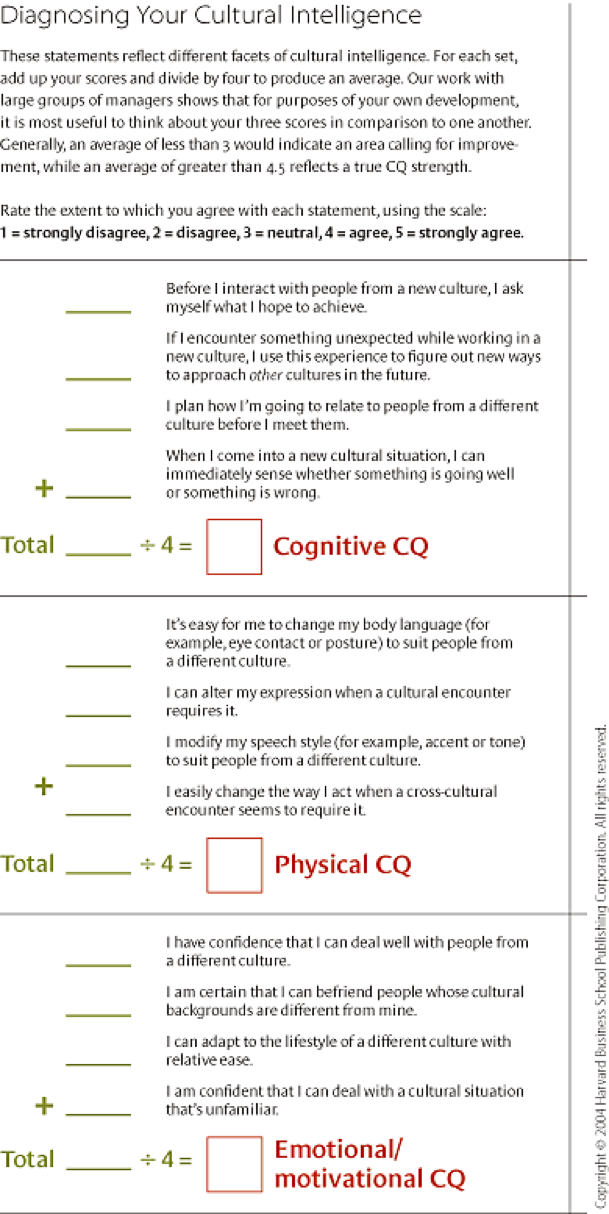Cultural intelligence: an outsider’s seemingly natural ability to interpret someone’s unfamiliar and ambiguous gestures the way that person’s compatriots would (Earley & Mosakowski, 2004).
Companies also have cultures that are often distinctive. Employees learn how to decipher the cultural code of their company over time through historical stories, environmental clues, geographic regions, meetings, etc. Organizational departments can also have their unique culture as well.
“Cultural intelligence is related to emotional intelligence, but it picks up where emotional intelligence leaves off. A person with high emotional intelligence grasps what makes us human and at the same time what makes each of us different from one another. A person with high cultural intelligence can somehow comprehend a person’s or group’s behavior those features that would be true of all people and all groups, those peculiar to this person or this group, and those that are neither universal nor idiosyncratic (Earley & Masakowski, 2004)”. One critical element that cultural intelligence and emotional intelligence do share is, in psychologist Daniel Goleman’s words, “a propensity to suspend judgment—to think before acting.” People who are somewhat detached from their culture can more easily adopt the mores and even the body language of an unfamiliar host.
Cultural Intelligence Profiles
Most individuals fit at least one of the following six profiles or a hybrid of two or more of the types. By answering the questions in the exhibit, you can decide which one describes you best.
- The provincial can be quite effective when working with people of similar background but runs into trouble when working with other cultures.
- The analyst methodically deciphers a foreign culture’s rules and expectations by learning the nature of work patterns and how to interact with them.
- The natural relies entirely on their intuition rather than on a systematic learning style.
- The ambassador, like many political appointees, may not know much about the culture they have just entered, but they convincingly communicate their certainty that they belong there.
- The mimic has a high degree of control over their actions and behavior, if not a great deal of insight into the significance of the cultural cues.
- The chameleon possesses high levels of all three CQ components and is a very uncommon managerial type.
The Three Sources of Cultural Intelligence: Cognitive CQ + Physical CQ + Emotional/motivational CQ
In conclusion, studies have shown that Cultural Intelligence does not lie tacit knowledge or emotional or social intelligence. A person with high CQ, whether cultivated or innate, can understand and master such situations, persevere, and do the right thing when needed.


